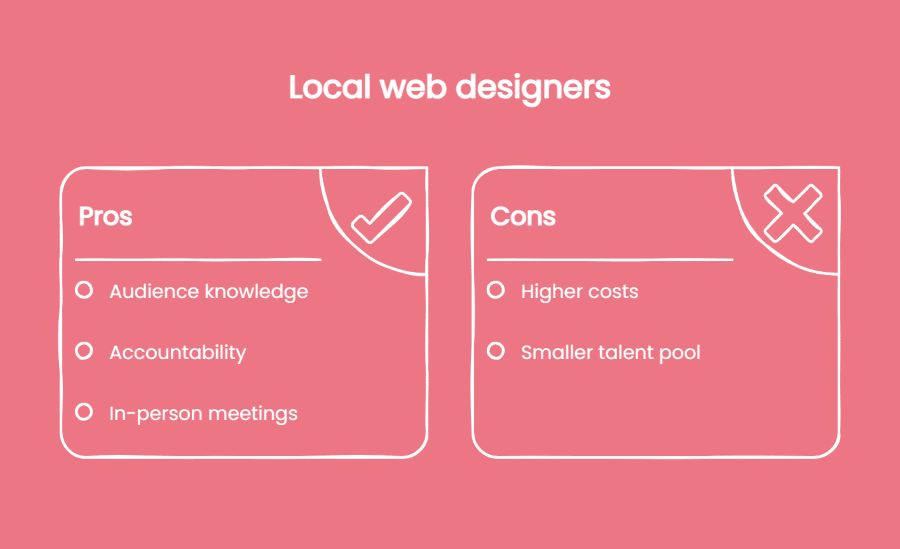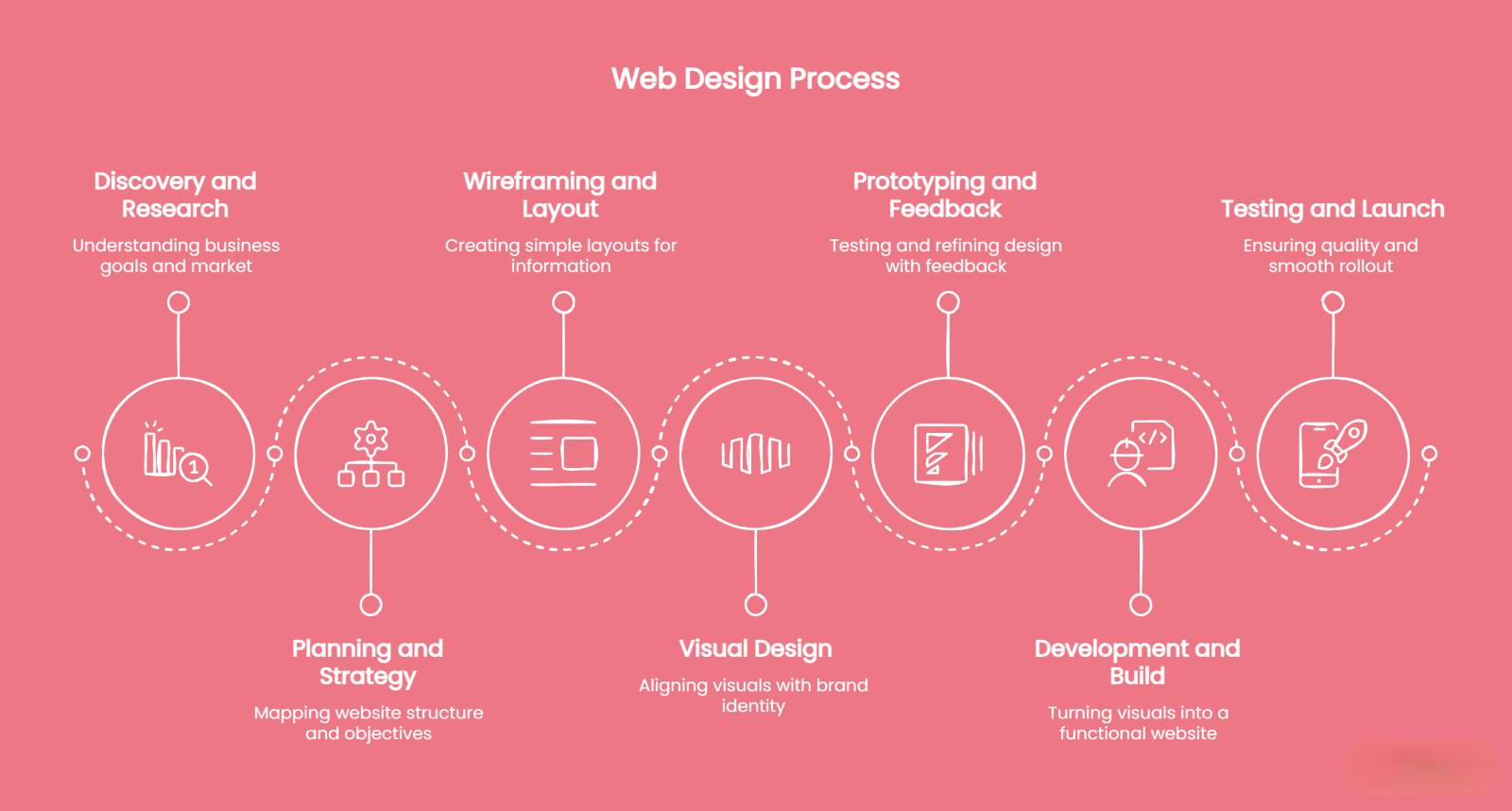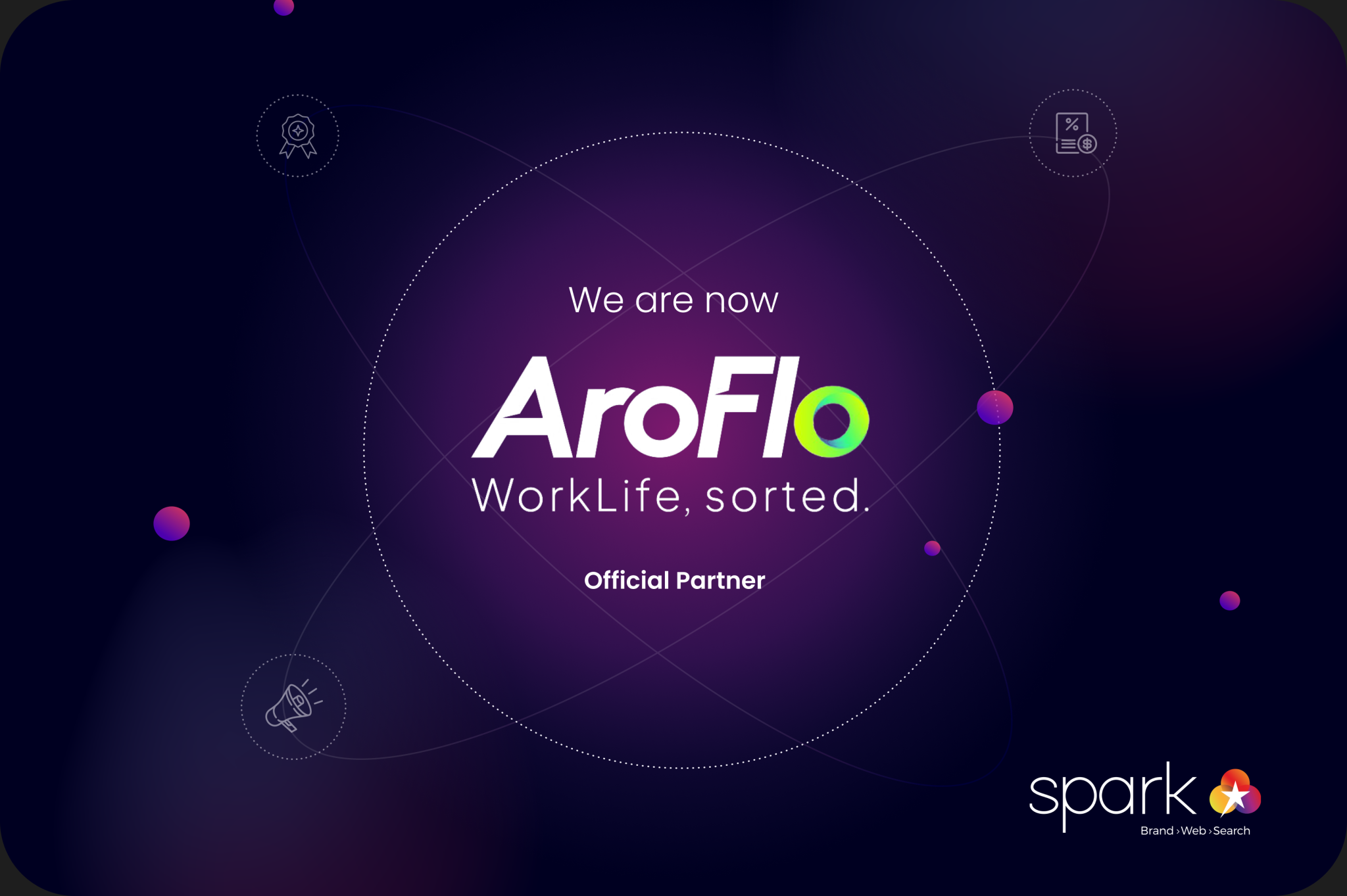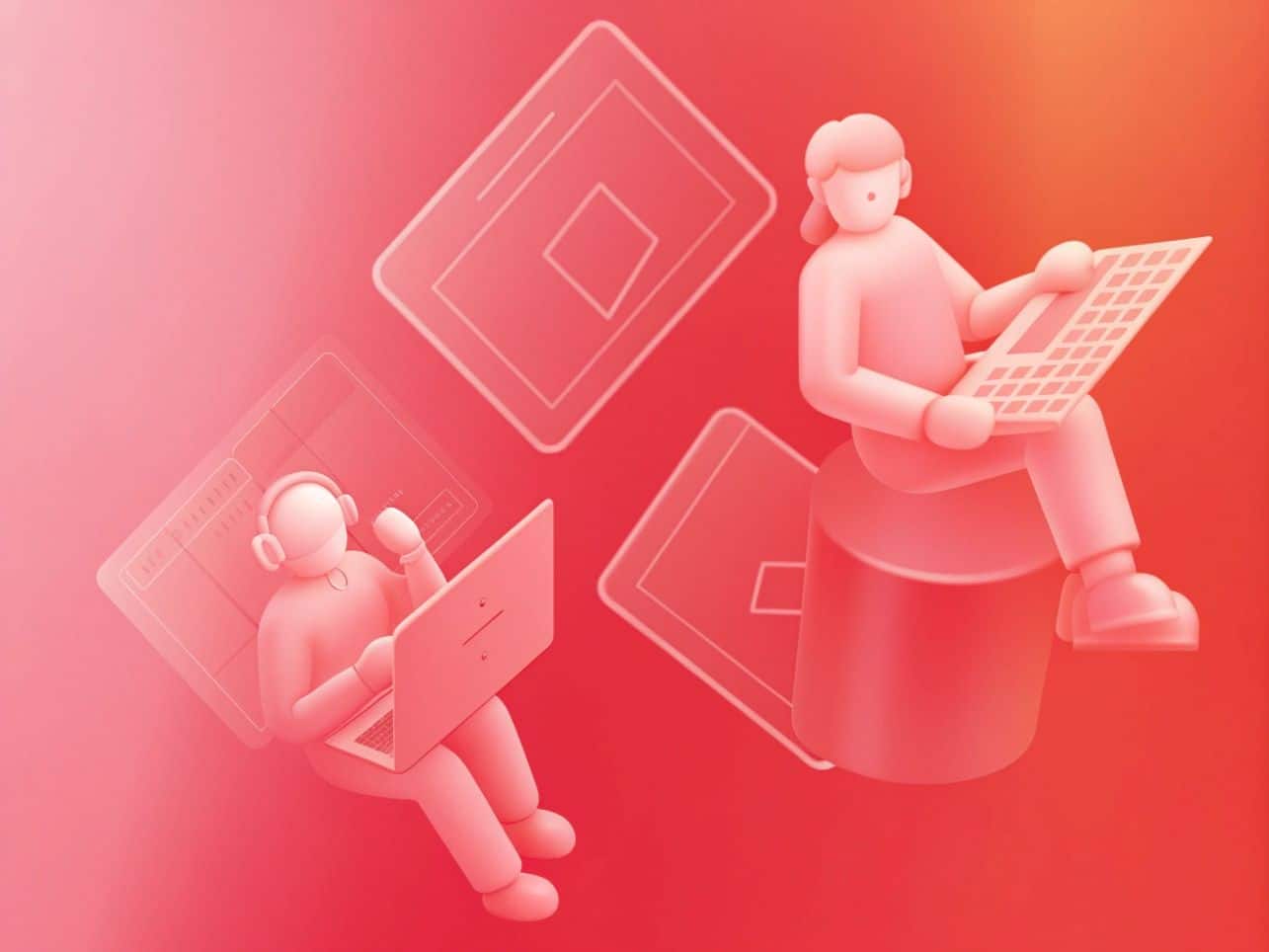TL;DR: Web designers in Australia blend visual design, UX and basic front-end skills to build responsive, on‑brand websites; common tasks include layout, prototyping, testing and CMS work, typical tools are Figma, Adobe and WordPress, and pay averages around $75,000 depending on city and experience.
When you land on a website, the first thing you notice isn’t the code running in the background—it’s the design. From the layout and colour palette to how easily you can navigate a page, web designers shape the entire experience. In Australia, demand for skilled web designers continues to grow as businesses compete to stand out online. But what is web designing, and how does the role differ from developers, marketers, or UX specialists?
This guide breaks down the responsibilities, skills, and tools that define modern web design in Australia. Whether you’re considering a career in the field, hiring a designer for your business, or simply curious about how websites come to life, you’ll find a clear picture of what the job involves—and what it takes to do it well.

Core responsibilities of web designers
Think of web designers as jacks‑of‑many‑trades. One moment they’re sketching layouts, the next they’re testing user flows or tweaking a CMS. It’s a role that blends creativity with strategy, and every responsibility plays a part in turning a blank screen into a polished, on‑brand website. The next sections dive into each of these in detail.
Creating visual design and layout
One of a web designer’s core responsibilities is shaping how a website looks and feels. This isn’t just about making things attractive—it’s about making deliberate choices that support both the brand and the user.
- Translating brand identity into colours, typography, and imagery that feel consistent across every page.
- Establishing visual hierarchy so users instantly know what to read, click, or focus on first.
- Balancing space and content so layouts feel clear and intentional, not cluttered or empty.
In practice, this means a designer is accountable for turning abstract brand guidelines into a working visual system that guides people through the site. Done well, the design becomes invisible—it simply feels natural to use.
Planning site navigation and user experience
Designers are responsible for making websites easy to move through. That means thinking beyond visuals and mapping how people actually use a site—from the first click on the homepage to the final step of a checkout or enquiry form.
Good navigation doesn’t happen by accident. Web designers:
- Map user journeys to anticipate the paths visitors are most likely to take.
- Structure menus and links so information is never more than a few clicks away.
- Reduce friction by making interactions feel natural and predictable.
When this responsibility is done well, users don’t notice the design at all—they simply find what they need quickly and leave with a positive impression. When it’s neglected, frustration builds, bounce rates climb, and businesses lose opportunities.
Designing responsive and mobile‑first websites
Another key responsibility for web designers is ensuring that sites work seamlessly across devices. With most Australians browsing on smartphones, designers start with small screens first, then scale up to larger displays.
This responsibility involves:
- Defining flexible grids and breakpoints so layouts adapt naturally.
- Choosing typography and imagery that remain legible on any screen size.
- Designing touch‑friendly buttons and navigation for mobile users.
By planning responsiveness at the design stage, web designers make sure the experience feels consistent and accessible—whether someone is scrolling on a phone during their commute or browsing on a desktop at work.
Building wireframes, mockups, and prototypes
Before a single line of code is written, web designers are responsible for shaping the blueprint of a site. This stage is about turning ideas into something tangible that clients, stakeholders, and developers can react to.
Designers usually start with wireframes—simple outlines that map structure and content placement. From there, they move into mockups, adding detail, branding, and visual polish. Finally, they create prototypes, interactive demos that simulate how the site will actually work.
Owning this process allows designers to test assumptions, gather feedback, and refine the experience early. It’s a responsibility that saves time, reduces costly revisions, and ensures everyone is aligned before development begins.
Optimising sites for speed and performance
A slow site is a bad site. Even a one‑second delay in load time can cut conversions by 7%, which makes performance part of a designer’s responsibility—not just a developer’s.
Designers influence speed through the decisions they make at the design stage:
- Choosing image formats and compression that balance quality with load time.
- Structuring layouts so pages render smoothly.
- Avoiding design elements that create unnecessary bloat.
They also collaborate with developers to ensure CSS, JavaScript, and delivery methods (like CDNs) support the design without slowing it down. The goal is simple: a site that looks great and loads instantly.
Testing and improving website functionality
A designer’s job doesn’t end when a site goes live. Part of their responsibility is to see how real people interact with the design and make improvements based on that feedback.
This can involve:
- Running usability tests to see where users get stuck.
- Using heat maps or analytics to understand behaviour.
- Adjusting layouts, colours, or interactions to improve clarity.
- Checking accessibility so the site works for everyone.
By treating design as an ongoing process, web designers ensure the site continues to meet both user needs and business goals long after launch.
Essential skills for web designers in Australia

Web designers need more than a good eye—they combine creativity, technical know‑how, and user‑focused thinking. In Australia, the role demands a toolkit that spans visual design, UX awareness, and practical digital skills. The next sections break down the essentials that make designers effective in the real world.
Visual design and branding
A core skill for web designers is shaping a brand’s identity into a clear, consistent visual system. To do this, they need to know how to:
- Apply colour theory with intent – choose palettes that reflect brand personality, meet accessibility standards, and create the right emotional tone.
- Build typographic systems – select fonts, weights, and sizes that establish hierarchy and readability across devices.
- Design layouts and spacing – use grids, alignment, and white space to create balance and flow.
- Establish visual hierarchy – guide attention so users instantly see what matters most.
- Maintain consistency – ensure every page, component, and interaction reinforces the same brand identity.
The skill isn’t just “making things look good”—it’s making design choices that are purposeful, consistent, and aligned with both user needs and brand goals.
User experience awareness
Beyond visuals, web designers need the skill of shaping how people actually move through a site. UX awareness is about anticipating user needs and making every interaction feel natural. To do this, designers need to:
- Map user journeys – understand the typical paths visitors take, from landing page to checkout or enquiry.
- Design intuitive navigation – structure menus, links, and calls‑to‑action so information is easy to find.
- Reduce friction – remove unnecessary steps, clutter, or confusion that could frustrate users.
- Balance goals – align what the business wants (sales, sign‑ups, enquiries) with what the user wants (clarity, speed, trust).
The skill here is empathy combined with structure: knowing how to design experiences that feel effortless for users while still achieving business outcomes.
Would you like me to continue with the next skill (proficiency with design tools) in the same structured style, or do you want to pause and refine this one first?
Proficiency with design tools
Web designers need fluency in the tools that bring ideas to life and make collaboration possible.
- Figma, Adobe XD, Sketch – for wireframes, mockups, and prototypes.
- Photoshop, Illustrator – for image editing and custom graphics.
- Content management systems (CMS) – like WordPress or Webflow, to design within real publishing environments.
- Collaboration platforms – using shared libraries, version control, and feedback tools to streamline teamwork.
The skill isn’t just knowing the software—it’s using the right tool at the right stage to move projects forward efficiently.
Basic front‑end knowledge
While not developers, web designers benefit from understanding how their work translates into code.
- HTML and CSS basics – to design layouts that are realistic and implementable.
- Responsive frameworks – awareness of how grids and breakpoints work in practice.
- Design‑to‑dev handoff – preparing assets, specs, and annotations that make coding smoother.
This skill bridges the gap between design and development, ensuring ideas don’t break down in execution.
Communication and collaboration
Design is a team sport, and web designers must be able to explain and defend their choices clearly.
- Client communication – translating visual decisions into business language.
- Cross‑functional collaboration – working with developers, marketers, and stakeholders.
- Feedback loops – giving and receiving critique constructively to improve outcomes.
The skill here is clarity: making sure everyone understands the design direction and feels aligned.
Attention to accessibility and standards
Modern web design requires inclusivity and compliance with global standards.
- Accessibility guidelines (WCAG) – designing with contrast, legibility, and keyboard navigation in mind.
- Inclusive design – ensuring layouts, colours, and interactions work for all users.
- Testing across devices – checking that designs hold up on different browsers and screen sizes.
This skill ensures websites aren’t just beautiful—they’re usable and accessible to everyone.
Tools and software web designers use
To deliver professional websites, designers rely on a toolkit that supports every stage of the process—from early sketches to live deployment. These tools cover design and prototyping platforms, image editing software, content management systems, and collaboration apps. Knowing how to use them effectively is part of the job, ensuring ideas move smoothly from concept to finished site.
1. Design and prototyping platforms
These are the tools designers use to sketch, refine, and present layouts before development begins.
- Figma – collaborative, browser‑based design tool for wireframes, mockups, and prototypes.
- Adobe XD – vector‑based design and prototyping tool, often used for UI/UX workflows.
- Sketch – popular with Mac users, strong for interface design and reusable components.
These tools let designers visualise ideas, test flows, and share interactive prototypes with clients and developers.
2. Image editing and graphics software
Used to create and refine visual assets like photos, icons, and illustrations.
- Adobe Photoshop – industry standard for photo editing and raster graphics.
- Adobe Illustrator – vector graphics tool for logos, icons, and scalable illustrations.
- Canva – lightweight, template‑driven design tool, often used for quick graphics or social media assets.
These tools ensure that imagery and graphics align with the brand and are optimised for web use.
3. Content management systems (CMS)
Platforms that allow designers to implement and manage designs in a live environment.
- WordPress – the most widely used CMS, flexible with themes and plugins.
- Webflow – combines visual design with front‑end code generation, popular for designer‑led builds.
- Shopify – e‑commerce‑focused CMS, often used for online stores.
CMS knowledge helps designers bridge the gap between static mockups and functional websites.
4. Collaboration and workflow tools
Software that supports teamwork, feedback, and project management.
- Slack / Microsoft Teams – communication hubs for design discussions.
- Trello / Asana / Jira – project management tools to track tasks and deadlines.
- Miro / FigJam – online whiteboards for brainstorming and mapping user journeys.
These tools keep projects organised and ensure smooth collaboration across teams.
Conclusion
Web design brings together creativity, strategy, and technology to shape how people experience a brand online. In Australia, the role demands clear responsibilities, a versatile skillset, and the right tools to deliver websites that are not only attractive but effective.
At its core, good web design is about connection—making sure users find what they need quickly, trust what they see, and enjoy the journey. For businesses, that means credibility and growth; for designers, it’s the craft of turning ideas into experiences that last.




